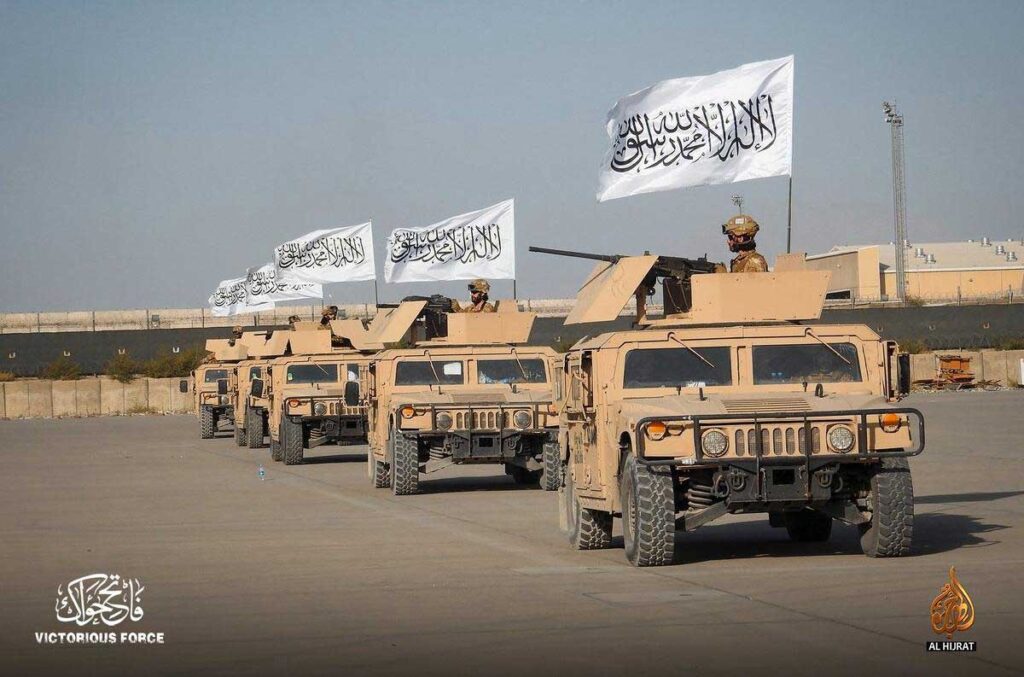The United States’ tumultuous withdrawal from Afghanistan in August 2021 marked the end of a two-decade military campaign but ignited a new era of instability. Among the most contentious legacies was the abandonment of an estimated $7 billion worth of advanced military equipment, including firearms, ammunition, aircraft, and surveillance systems. This arsenal, intended to bolster Afghan security forces, instead fell swiftly into Taliban hands, transforming the insurgent group into a quasi-state actor armed with cutting-edge technology. Former President Donald Trump encapsulated bipartisan frustration, labeling the Biden administration’s decision “stupid”—a critique underscoring the strategic and humanitarian ramifications of this oversight. The repercussions, however, extend far beyond rhetorical rebukes, fueling terrorism, black markets, and regional discord.
The Taliban’s rapid takeover of Kabul coincided with the seizure of military hardware that dwarfed their pre-2021 capabilities. From Humvees and M4 carbines to Black Hawk helicopters and night-vision gear, the group gained tools that enhanced both operational efficiency and symbolic authority. This windfall not only legitimized their rule but also emboldened transnational ambitions. The Islamic Emirate’s newfound arsenal has been leveraged to suppress domestic dissent, project power, and, alarmingly, support proxy groups across South Asia. The presence of US-made weapons in Taliban hands has deepened fissures in regional security, enabling the group to act as both a governing force and a patron of militant networks.
Nowhere are the consequences more acute than in Pakistan, where terrorist attacks in border regions have surged by 73% since 2021. Groups like the Tehrik-i-Taliban Pakistan (TTP), Islamic State Khorasan Province (ISKP), and Balochistan Liberation Army (BLA) exploit the influx of abandoned US weapons, perpetuating a cycle of violence. Pakistani security forces have repeatedly recovered M16 rifles, grenade launchers, and encrypted communication devices from slain TTP militants—tangible proof of cross-border arms trafficking. The Biden administration’s failure to secure its equipment has thus indirectly subsidized attacks on a nuclear-armed ally, straining US-Pakistan relations and destabilizing a region already teetering on the brink.
Beyond immediate conflict zones, abandoned weapons have permeated a shadowy transnational network. Reports from the United Nations indicate that US-made arms are now trafficked to militant groups in Kashmir, Iran, and even Africa, with the Afghan-Pakistan border serving as a hub. This black market operates with impunity, facilitated by corrupt actors and the Taliban’s tacit indifference. The result is a self-sustaining ecosystem where American technology empowers adversaries worldwide, undermining counterterrorism efforts and contradicting Washington’s security objectives.
While calls to reclaim abandoned equipment, notably from figures like Trump, reflect legitimate grievances, they ignore geopolitical realities. The Taliban-led Islamic Emirate, unrecognized by most nations and grappling with internal crises, lacks both the incentive and infrastructure to comply. Demanding weapon returns is rhetorical posturing; the focus must shift to accountability. Instead of futile recovery efforts, the international community should pressure the Interim Afghan Government (IAG) to deliver on counterterrorism, regional security, and human rights. Performance-based engagement—tying aid and recognition to concrete actions—offers a pragmatic path forward.
The Taliban’s refusal to curb terrorist activities or return US assets underscores their defiance of international norms. Despite pledging to prevent Afghanistan from becoming a terror haven, the IAG has ignored requests to dismantle TTP sanctuaries or stem ISKP growth. This intransigence reflects a calculated bet: that the West’s preoccupation with Ukraine and China will afford them impunity. Such miscalculations risk catastrophic blowback, as regional players like Pakistan and Iran grow increasingly inclined to unilateral action.
Following Recommendations
- The US should collaborate with Pakistan, India, and Central Asian states to track and neutralize abandoned weapons.
- Tie humanitarian aid and diplomatic recognition to IAG compliance on counterterrorism and human rights.
- Enhance intelligence-sharing and resource allocation to help Pakistan secure its Afghan border.
- Impose targeted sanctions on traffickers and corrupt officials profiting from illicit arms sales.
- Establish a regional task force under UN auspices to address cross-border terrorism and arms proliferation.
- Document and publicize the consequences of abandoned weapons to galvanize global action.
The abandoned military equipment in Afghanistan epitomizes the perils of hasty withdrawal and strategic shortsightedness. Its ripple effects—from resurgent terrorism to eroded US credibility—underscore the need for nuanced, collaborative solutions. As Sun Tzu astutely observed, “In the midst of chaos, there is also opportunity.” The path forward demands transforming crisis into cohesion, holding both the IAG and the international community accountable for a sustainable peace.
